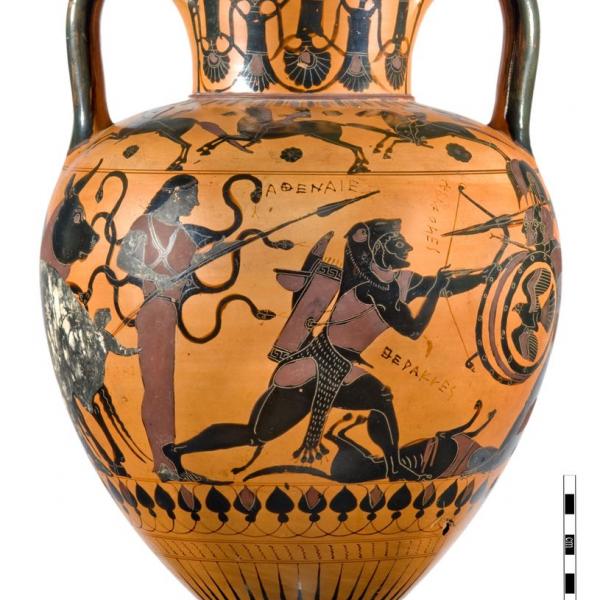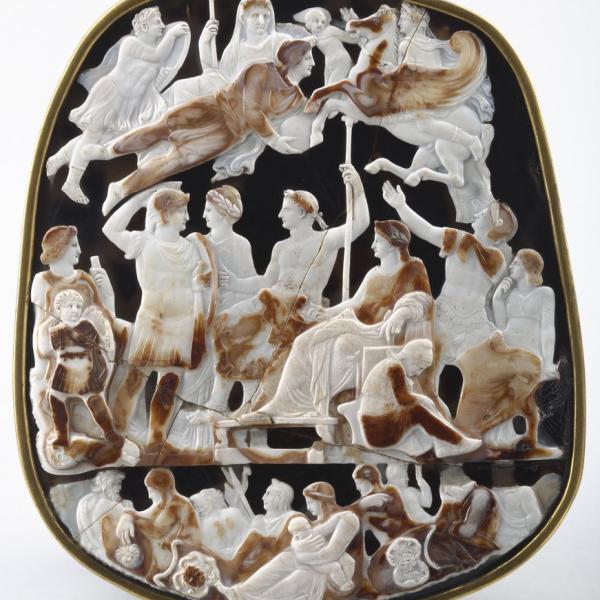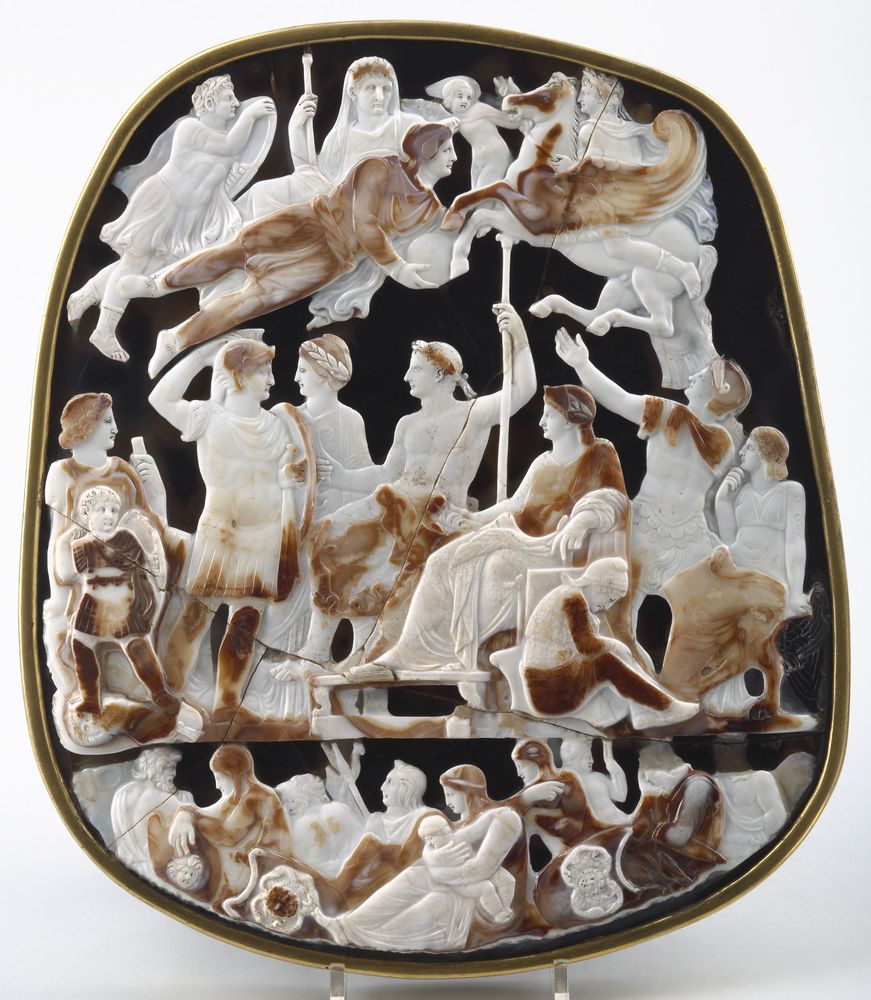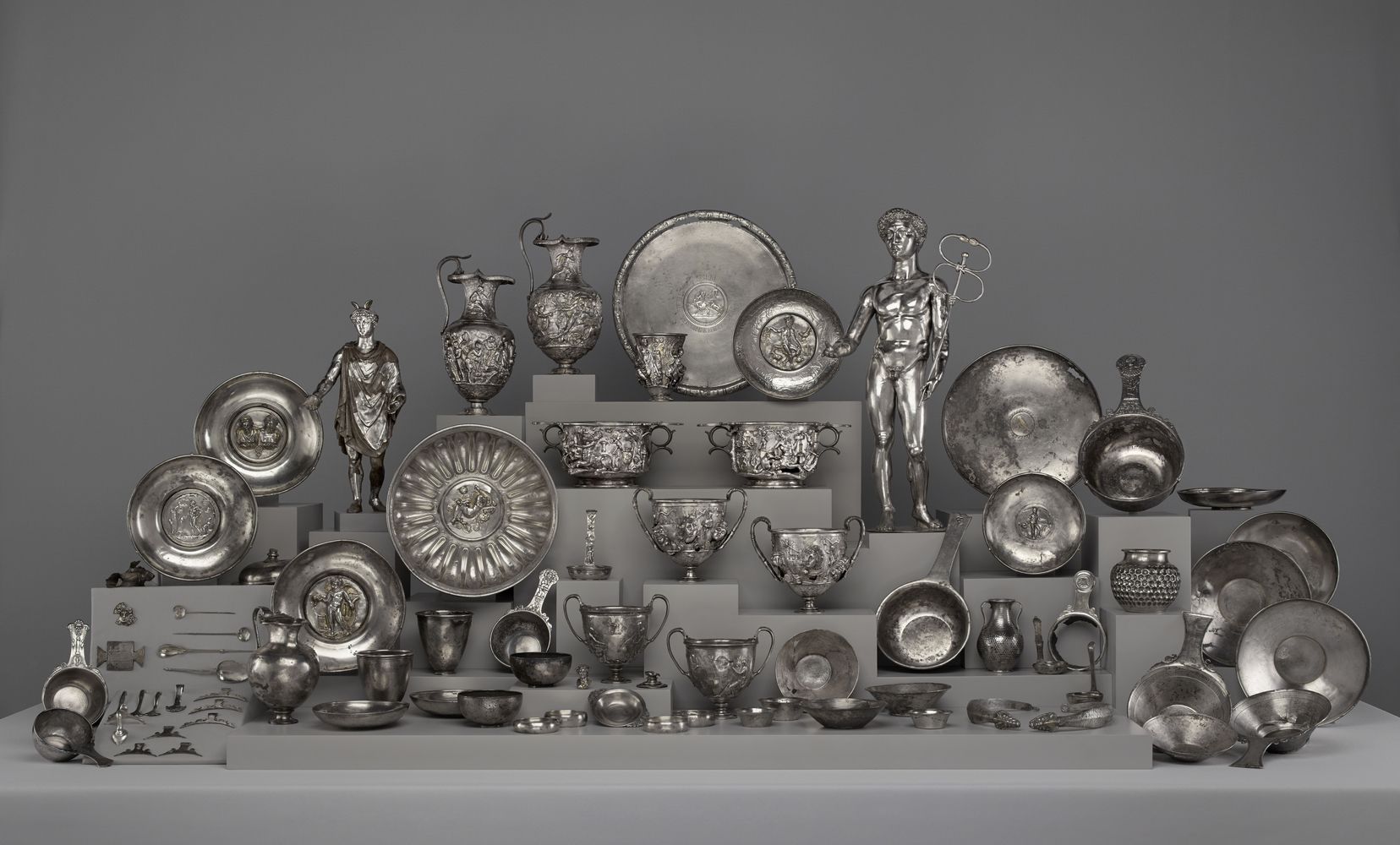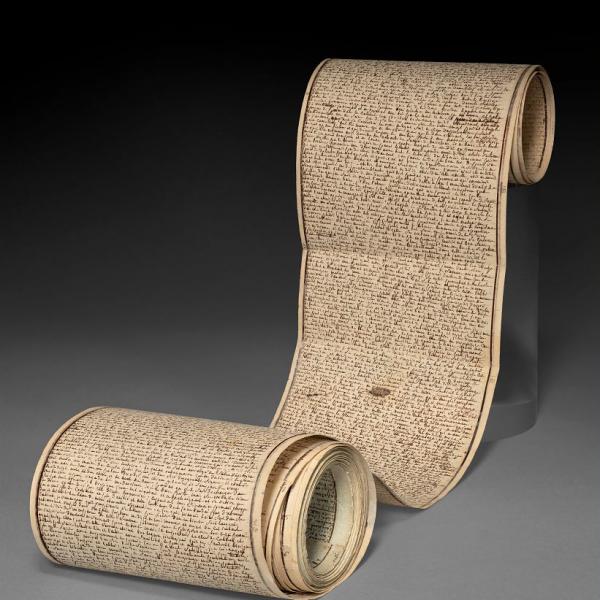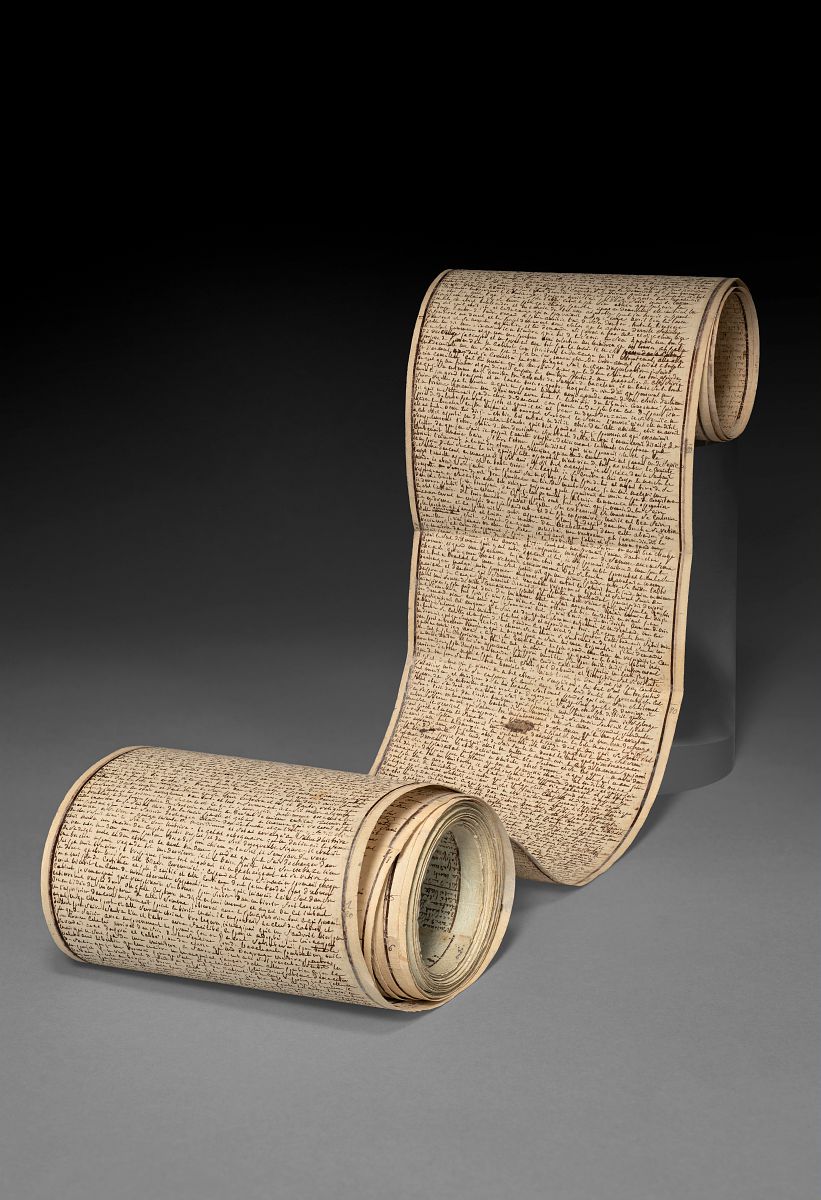The BnF Museum collections
Some of the collections’ treasures
“Europes en partage” (Sharing Europes): The BnF museum’s new annual theme
Each year, the gallery hosts a new thematic presentation, allowing to discover a curated selection of the Library’s treasures in an historical perspective.
The fourth presentation, « Europes en partage » (13 September 2025 – 6 September 2026) invites visitors to explore key moments that have shaped Europe, from the 9th century to nowadays, through a remarkable selection of around 150 standout items from the BnF’s collections.
Masterpieces of Carolingian, Romanesque, and Gothic art (9th to 14th centuries)
Illuminated manuscripts, such as the sumptuous Theodulphe Bible, a masterpiece of Carolingian art, and Byzantine ivories repurposed in bindings, tell us about the role of the Church and monastic networks in shaping a common culture.
The breviary used in the Sainte-Chapelle, originating from the «library» of Charles V (1338-1380) which entered the Library through a national subscription in 2024, illustrates the importance of royal collections in this luxurious production.
Europe in motion (15th-17th centuries)
The invention of printing, notably represented by a copy of the Gutenberg Bible, the emergence of the artist’s figure during the Renaissance, as shown by watercolour drawings of Dürer (1471-1528), and the prosperity of the Netherlands in the 17th century, illustrated by engravings of Rembrandt, suggest the constant cultural evolution of Europe throughout modern times, that the astonishing map by Nicolas-Joannis Visscher representing Flanders and the Netherlands in the shape of a lion illustrates perfectly.
The taste for flowers and gardens in Europe (17th century)
In the 17th century, the botanical plates in the famous Nassau-Idstein Florilegium, the gardening treatises of
Jacques Boyceau, the King’s gardener, and the floral collections of Daniel Rabel recall the rise of a civilisation in which botany and garden art became shared passions across Europe.
From Europe of the Age of Enlightenment to Romantic Europe: The Circulation of Knowledge (18th-19th centuries)
Montesquieu’s manuscripts (De l’esprit des lois), the great undertaking of the Encyclopédie, and Victor Hugo’s Les Misérables bear witness to the political and social commitment that transformed the continent right up to the revolutionary movements of the 19th century. The music sheet of Mozart’s Don Giovanni and the romantic fervour of Beethoven’s scores (Piano Sonata No.23, known as the Appassionata) reflect the eminent place of music in the European cultural stage.
Modern and contemporary Europe (19th-20th centuries)
The journey ends with the first advertising posters (Mucha’s posters), emblematic figures of both the artistic avant-garde (Sonia Delaunay) and science (Marie Curie) who came to France from Eastern Europe, and the emergence of the cultural industries and of the record (Piaf’s little black dress), as well as the women’s emancipation movement (Simone de Beauvoir), bearers of a new European order after the upheavals of the Second World War.
Items made of paper are particularly sensitive to light. For preservation purposes, the exhibited pieces will be renewed in January and May 2026. Each visit offers thus the possibility to discover new treasures.
Practical information
Opening times
Tuesday (late-night opening): 10 a.m. – 8 p.m.
Wednesday to Sunday: 10 a.m. – 6 p.m.
Closed on Mondays and select bank holidays*
The Museum is open on 8 May, Ascension Thursday, and 1 and 11 November.
* The Museum is closed on 1 January, Easter Monday, 1 May, Whit Monday, 14 July, 15 August and 25 December
Please note: due to the fragility of certain artworks, some pieces on display in the Mazarin Gallery and Rotunda are rotated every four months, showcasing the breadth of the BnF’s collections. These spaces are closed to the public while the pieces are rotated.
Mazarin Gallery closing dates: From Monday 12 to Thursday 22 january 2026 included
Rotunda closing dates: From Monday 6 to Friday 10 October 2025 included and from Monday 2 to Friday 6 February 2026 included
Access
Site Richelieu
5, rue Vivienne
75002 PARIS
Group activities
Reservation obligatory at visites@bnf.fr or on 01 53 79 49 49 (from Monday to Saturday, 9 am to 5 pm)
Rates
During the Mazarin Gallery’s closure period, individual tickets are only available at ticket offices and Museum admission rates are lowered to 7 € (full rate), 5 € (reduced rate), 10 € (full rate coupled with an exhibition) and 7 € (reduced rate coupled with an exhibition).
Guided tours of the BnF’s Museum – Reservation

